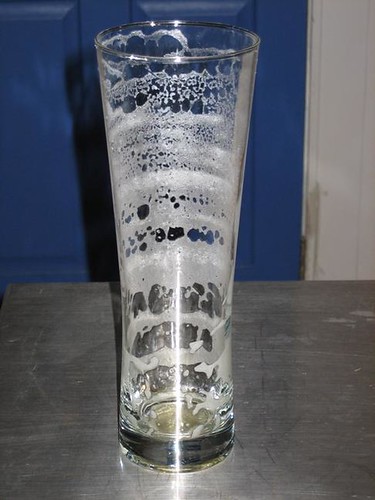Got 20lbs Pale Ale Malt. Toasted about 3lbs of it at 350F for about 20min - was a little acrid right after I cooked it, but I came home to a nutty, chocolatey smelling house this afternoon! Sweet.
So here's the plan:
Cascade IPA:
Preboil ~1.060, OG ~1.065 Approx 50 IBU
Cascade pellets 6% 2oz 60
Cascade pellets 6% 1oz 15
Whirlfloc, Wyeast Nutrient
Cascade pellets 6% 1oz 5
WLP001, 1qt DME starter
Cascade pellets 6% 1oz dry, secondary
Small beer:
Preboil ~1.035, OG ~1.040 Approx 30 IBU
Glacier pellets 6% 1oz 60
Glacier pellets 6% 1oz 15
Danstar Windsor
Fudge factors entered for efficiency and volume (runoff/boiloff) variations. I've gotten right around 70% historically. Software is saying I can get about 11 gallons of 1.050 total runnings.
I just got a turkey fryer, so while I could actually boil these simultaneously, that could get pretty hectic. Would it be ok to leave the 2nd runnings in the tun, sitting on the mash at 160ish for a couple hours?
Any suggestions for fermentation schedules?
So here's the plan:
Cascade IPA:
Preboil ~1.060, OG ~1.065 Approx 50 IBU
Cascade pellets 6% 2oz 60
Cascade pellets 6% 1oz 15
Whirlfloc, Wyeast Nutrient
Cascade pellets 6% 1oz 5
WLP001, 1qt DME starter
Cascade pellets 6% 1oz dry, secondary
Small beer:
Preboil ~1.035, OG ~1.040 Approx 30 IBU
Glacier pellets 6% 1oz 60
Glacier pellets 6% 1oz 15
Danstar Windsor
Fudge factors entered for efficiency and volume (runoff/boiloff) variations. I've gotten right around 70% historically. Software is saying I can get about 11 gallons of 1.050 total runnings.
I just got a turkey fryer, so while I could actually boil these simultaneously, that could get pretty hectic. Would it be ok to leave the 2nd runnings in the tun, sitting on the mash at 160ish for a couple hours?
Any suggestions for fermentation schedules?


 Time to say cheers to my inner Englishman.
Time to say cheers to my inner Englishman. FG 1.012, 82% apparent!
FG 1.012, 82% apparent!

